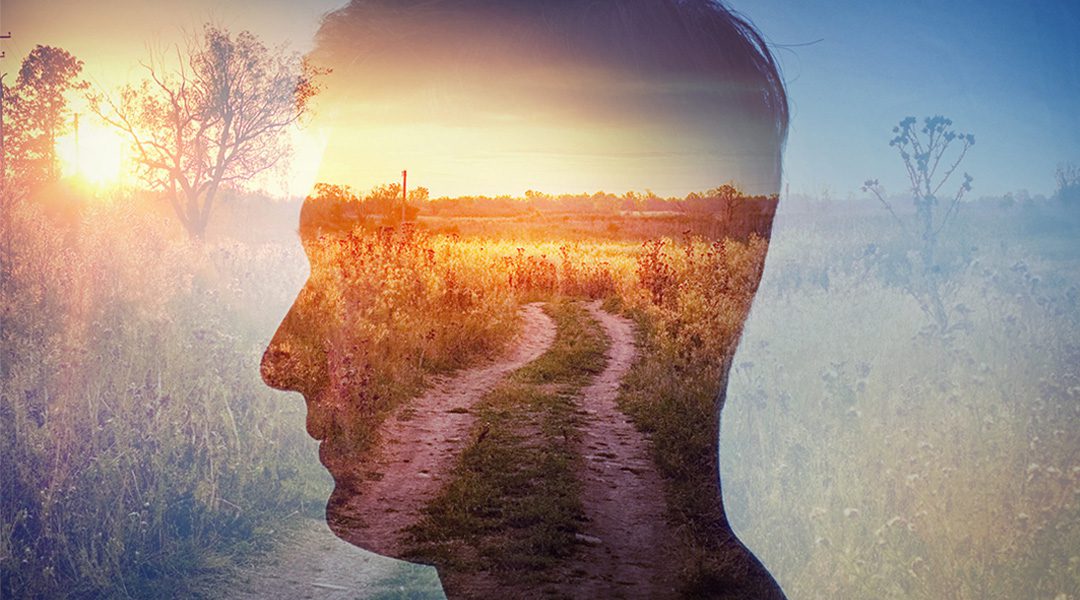Illustration by Rachel Brown Smith, Anahata the Heart Chakra
Grief and loss are some of life’s biggest challenges. Yogini, author, and psychotherapist Karla Helbert opened her heart in the following interview and offered an intimate sharing of her personal experience with grief after the passing of her son. She describes how she found strength and refuge in the teachings and practices of Yoga and how she utilizes Yoga to offer support and guidance to her clients who have suffered life-changing trauma, grief, and loss.
You’ve had a very personal experience with grief and loss. Would you be willing to share some of your journey through grief and how you were able to support yourself through that process?
In 2005, my son was diagnosed with an exceedingly rare and deadly brain tumor. Of course, we prayed for a miracle. Thousands of people all over the world prayed for his miracle. After many surgeries and chemotherapy, his brain suffered what doctors called “total neurological devastation.” We didn’t want him to endure any more suffering and chose to discontinue treatment of the tumor. We brought him home—to love him, take care of him, to make him as comfortable as possible. He died 6 months to the day of diagnosis. He was only 9 months old. I don’t think I actually did support myself through that process of grief. I mean, I did the best I could, that’s true. I really did. And I know I did the best I could possibly have ever done for my child. But myself? Looking back, when I read things I wrote then—through his illness, after his death—I feel a heart-crushing sorrow for the me who was living through it all. And I think, “How did I do that?” I vividly remember others saying to me things like, “I could never live through it,” and, “You’re so strong (sigh),” which can feel so isolating—I mean, how else are we supposed to do it? Are we not showing enough grief and pain? If our pain shows too much, it’s also not acceptable because it’s too upsetting to others. No one else sees you grief-stricken, sobbing on the floor, bereft and barely breathing, barely human. Or maybe, that state is as fully human as anyone can ever truly be. It’s all painfully unthinkable. No one wants to think of such things, and that is clear in how the traumatically bereaved are treated by society. But also, I have more compassion now, because I can feel nearly the same thing about my own direct experience. How did I do that? How, truly, did I do such a thing? How did I live through it? Sometimes I really just do not know. I still don’t know. Ultimately though, I think the answer is that I did not do it alone. We had so much support, so much love, so much prayer, which, while it did not save our son’s life—and it still pains me greatly to say that—did perhaps save us in some way. Harold Kushner, in his book When Bad Things Happen to Good People, says, “When we reach the limits of our own strength and courage, something unexpected happens. We find reinforcement coming from a source outside ourselves. And in the knowledge that we are not alone, that God is on our side, we manage to go on.” Somehow, we manage to go on. It’s amazing really. Reinforcements come in the form of other people, of friends, of family, acts of kindness, from some inner reserves we never knew we had, some outer Force that is there guiding and supporting. You really never know what you can do until you have to do it. I can truly say that am so grateful my Integral Yoga teacher training came before the tragedy of the death of my child. I know the teachings of Yoga helped me through it—particularly the diagnosis and the months of his illness. I will say though, that after Theo died, it was much, much harder to find my way. I felt as though I had nothing to stand on. My entire Universe, everything I thought I knew to be True was suddenly just…gone. None of it held anymore. I know that wasn’t actually true, but it felt that way. And with that came a despair I could hardly stand.
How can the paths of Yoga—Jnana, Bhakti, Karma, Raja, Hatha and Japa—be used as support when suffering from grief, trauma, or loss?
Many people are not aware of the multiple paths of Yoga. Even among Yoga teachers, differentiation among the paths is not necessarily well-known or taught. The central teaching is that each path of Yoga is meant to lead us toward realization of union. This is the literal meaning of the word Yoga. It means to “yoke;” to bind, to join, to unify. The union of Yoga describes unification, yoking together of mind, body, and spirit. The unity of Yoga is the realization and remembering of what so many of us have forgotten: That all aspects of Self, who we truly and fully are —body, mind, spirit—have never been removed from Oneness. We are, and have always been, united and whole. We have simply forgotten. Yoga helps us to remember. Each path, when practiced, takes us to that place of remembered wholeness—the truth of our wholeness, who we really are, who we’ve always been. Experiences of profound grief and trauma top the list of things that contribute to forgetting. At some point, all of us will experience grief due to the death of someone we love. If we live long enough, love deeply enough, we will experience grief. Many of us also experience trauma as we move through life. Traumatic experiences always include grief and loss, and grief is often layered with trauma. These experiences are life-changing. When it happened to me, I knew that I could not get away from this grief, which also held a great deal of trauma. I realized, as I practiced being with my feelings, the fear, the anxiety, breathing through it, experiencing myself and grief, every moment I could possibly stand it, steeping myself in love for my child, practicing ritual and chant, grieving as I needed to, I came to realize that I had been using the tools of multiple branches of Yoga. Even when I did not know it; I had been practicing Yoga through grief and it had not let me down.
In your client-centered counseling practice, you employ many techniques and modalities to work with your clients. In what ways do Yoga, meditation, and mindfulness inform your approach?
Everything I do is informed by the teachings of Yoga. I use, practice, and teach concepts from the various branches with every person who comes to work with me. Sometimes I use Yoga words, the Sanskrit terms, and other times I put the concepts in plain English, never saying it’s Yoga we’re talking about. The concept of Ahimsa, for example, is central to self-care and to our awareness of our treatment of others as well as ourselves. It is truly central to the practice of psychotherapy and the ethical precept of, “First, do no harm.” Satya is necessary when we talk about telling ourselves the truth about our own situations— being honest with ourselves about our inner workings, rather than deluding ourselves. Brahmacharya, self-restraint, or continence, is often discussed in terms of pausing, taking a moment to notice feelings, to perhaps delay any behavior we may be engaging in that’s harmful to ourselves or others. Svadhyaya is absolutely necessary for good outcome in therapy. We must practice self-study to have self-awareness, without which nothing can change. Ishvara pranidhana is surrender to that which we cannot control, having faith in something larger than ourselves—whether community, Nature, God, Science, our own higher Selves, our support systems, faith, whatever is appropriate to the client in front of me. These are concepts I teach and talk about in sessions nearly every time I am with a client. Pratipaksha bhavana is another concept I work with, not simply “positive thinking,” which can by-pass pain, but by putting deep thought and self-awareness into cultivating thoughts which oppose those disturbing our peace can be very effective, especially when treated as a daily practice. All the Yamas and Niyamas are part of my way of practicing therapy. This simply makes sense to me. The concepts of the chakras, the needs, emotions, energies, the developmental aspects of an individual which the chakra system illustrates and encompasses is an effective way to help clients understand themselves better and to learn to work with balance—the gunas. I teach pranayama, meditation, and mindfulness practices to nearly everyone I work with. I have made personal recordings of chants, Yoga Nidra, and meditation for many clients. I know these things are helpful because I practice them myself. Interestingly, all these yogic concepts are supported by my clinical training. Legendary therapists such as Carl Jung, Alfred Adler, Abraham Maslow, Carl Rogers, Viktor Frankl, Rollo May, Virginia Satir, Milton H. Erikson, Irvin Yalom, and others demonstrated these concepts masterfully in their work. To me, this mirroring demonstrates the timeless success of the teachings of Yoga.
You are a certified Compassionate Bereavement Care provider, trained to work in the area of traumatic grief. Could you share some information regarding the upcoming Compassionate Bereavement Care-Yoga Provider certification training that you are offering for the first time this September? How that training is uniquely different from the regular CBC certification?
Yes! Thank you so much for asking! I am very excited that we are now offering the Compassionate Bereavement Care-Yoga Provider certification (CBC-Y®). The Compassionate Bereavement Care® certification, a training available through the MISS Foundation and the Elisabeth Kubler-Ross Family Trust, is a 30 hour post-graduate training program for mental health providers and others who work with the traumatically bereaved. We teach providers how trauma and traumatic grief impact the individual, the brain and body, and also look at how society and the medical model views grief. The CBC provides training in a unique model of care described by my friend and colleague Dr. Joanne Cacciatore, the ATTEND model. ATTEND stands for Attunement, Trust, Therapeutic touch, Egalitarianism, Nuance and Death Education. CBC-Y® is a training for Yoga teachers, Yoga therapists as well as mental health and bereavement providers who are either Yoga teachers or have a solid Yoga practice themselves. For those who want to deepen their understanding of this very vulnerable population, the training brings together the science and research of grief and trauma together with the ancient and timeless concepts of Yoga. We will learn how the ATTEND model is uniquely reflected in the Patanjali’s Eight Limbs of Yoga—the Yamas and Niyamas, asana, pranayama, sensory aspects, concentration, meditation, and also how each branch of Yoga can be specifically used in practice to help support those in grief, trauma, and bereavement. The program combines 30 hours of mental health CEUs as well as 30 Yoga Alliance contact hours for Yoga teachers. And best of all, providers and teachers will be far more confident in their ability to support and help those in trauma and grief.
What advice would you offer to readers who are struggling with grief or trauma?
Be gentle with yourself. As much as possible, practice compassion toward yourself. I know this can be difficult. I often say to those I companion through grief, “In any moment of this grief, can you just take a moment, place your hand over your heart, connect with the energy of your heart, even if it feels broken, and ask yourself, ‘What is the most compassionate thing I can do for myself right now?’ and then do that thing?” Chinnamasta Stiles, who wrote the foreword to my book Yoga for Grief and Loss, taught me the beautiful affirmation, “With deep respect and love, I honor my heart, my inner teacher.” In grief, connecting with and always honoring the love we have for our dear ones who have died can be a great practice. Yes, there is deep pain—there is also deep love. When we can notice, feel, and act on and in that love, it will carry us through. Even when we do not believe it is possible. That is truth of Yoga and the truth of Love.



